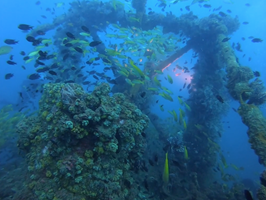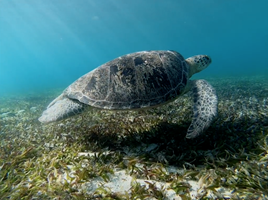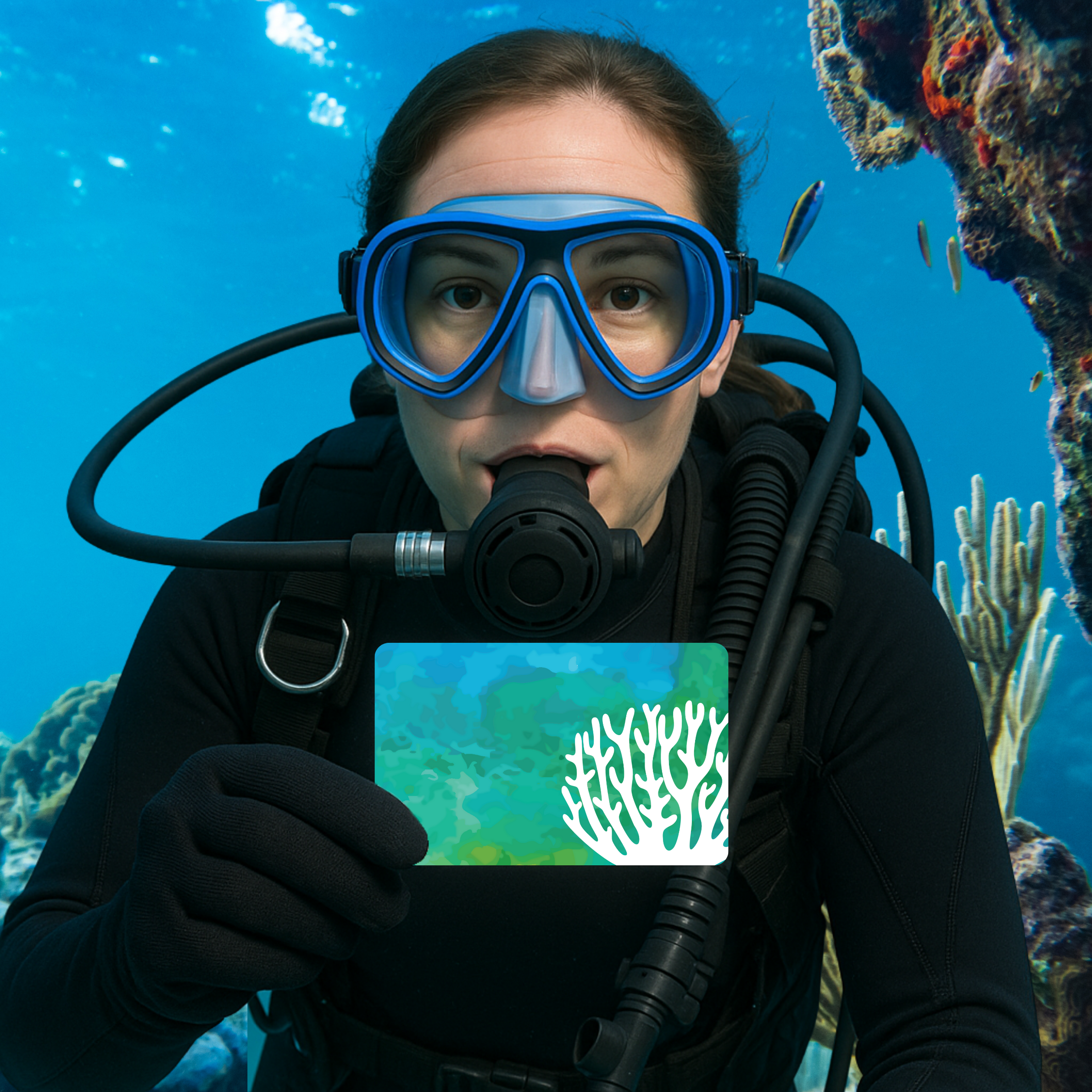Ocean First in Madagascar 2019
Ocean First Jul 05, 2022

In Madagascar they have a saying, “mora, mora,” which translated means “slowly, slowly.” Upon landing in Antananarivo our group of 9 adventurers quickly learned that this was going to be a recurring theme for the next 3 weeks in this amazing country. As western travelers, we become accustomed to instant gratification and speedy replies. Madagascar is on a different time clock which, once you get used to it, is surprisingly refreshing.
 We started our journey at a small boutique resort called Sakatia Lodge which is on the island of Sakatia off Nosy Be. Our home for the next week was off the northwestern tip of Madagascar in the Indian Ocean and a lovely little place which immediately felt like home. Upon arrival we had our first introduction to the tidal schedule which dictates everyday life on Sakatia. The tide was out and our transfer boat was unable to make a close approach to shore, so we needed to walk about 150-200ft through shallow water to get to the beach. Little did we know, this was going to be a regular occurrence for the next week! Our accommodations were cute bungalows, the food was delicious (but never enough butter), and the staff welcoming and helpful. It is amazing how quickly one can get used to the island lifestyle!
We started our journey at a small boutique resort called Sakatia Lodge which is on the island of Sakatia off Nosy Be. Our home for the next week was off the northwestern tip of Madagascar in the Indian Ocean and a lovely little place which immediately felt like home. Upon arrival we had our first introduction to the tidal schedule which dictates everyday life on Sakatia. The tide was out and our transfer boat was unable to make a close approach to shore, so we needed to walk about 150-200ft through shallow water to get to the beach. Little did we know, this was going to be a regular occurrence for the next week! Our accommodations were cute bungalows, the food was delicious (but never enough butter), and the staff welcoming and helpful. It is amazing how quickly one can get used to the island lifestyle!
Our trip was intentionally planned to coincide with whale shark season when these glorious creatures migrate along the east African coastline between Madagascar, Tanzania and Mozambique. The whale sharks that come through at this time of year are usually shy juveniles that are feeding at the surface. These 20-25ft teenagers are accompanied by an entourage of bonito, fusiliers, and seabirds which give away their location to an experienced boat captain. As seasoned divers we know to never expect to see whatever creature is “in season”; that’s the best way to guarantee they will stay elusive! We were pleasantly surprised to have 3 encounters within the first 3 days of diving. These are all snorkeling experiences so as the captain deftly positions the boat for an optimal experience, the snorkelers get suited up and prepare for “military duck” style entry to the water. This means no excessive splashing and try to stay out of the shark’s way! Each encounter was nothing short of incredible with close encounters in crystal clear water. The ocean gods favored us, it seemed.
The diving was fantastic with healthy reefs and prolific sea life. There were big schools of fusiliers, huge snapper, blue-spotted rays, anemones, octopus, crocodile fish, and so much more. When you travel to a destination that is primarily known for land attractions, it is a huge bonus to have the diving be top-notch and exciting! There was one wreck dive where there were so many fish it was hard to see the other divers, let alone the shipwreck itself. Enormous schools of yellow snapper filled the holds and at least 15 beefy lionfish patrolled the wreck in search of an unsuspecting meal. Divers needed to watch their buoyancy as there were numerous scorpionfish and well-camouflaged crocodile fish hoping they remained unseen. On our last dive, we were blessed with an up close and personal experience with two octopus in the first stages of dating. Octopus are by far one of the most intriguing and engaging marine animals – they are smart, fluid, and fascinating. This pair was not bothered by our presence and proceeded to slide, crawl, explore and delight the divers for over 10 minutes. Amazing!
 After a week of relaxation and great diving we were ready to move onto the next phases of our trip. We returned to Antananarivo (or “Tana”) in preparation for our departure to the southwestern coast of Morondava. This required a flight as Madagascar is a huge country and logistics are anything but simple. Upon arrival at Palissandre Cote Ouest in Morondava, we drove through a bustling market filled with every kind of vegetable, freshly caught fish, colorful pareos (sarongs), and densely-packed streets. Silence filled our transfer vans as our eyes, ears, and minds absorbed this chaotic scene; it was system overload! One of the most impressive scenes were the women who carried just about everything perfectly balanced on their heads. They start training at 6 years old and some of their loads were truly impressive – full loads of laundry, huge baskets of fish, freshly purchased groceries, mattresses, car batteries… anything goes. These formidable women not only carried kilos of goods on their heads, they were also often accompanied by a baby on their back and at least one or two toddlers at their side. Unreal.
After a week of relaxation and great diving we were ready to move onto the next phases of our trip. We returned to Antananarivo (or “Tana”) in preparation for our departure to the southwestern coast of Morondava. This required a flight as Madagascar is a huge country and logistics are anything but simple. Upon arrival at Palissandre Cote Ouest in Morondava, we drove through a bustling market filled with every kind of vegetable, freshly caught fish, colorful pareos (sarongs), and densely-packed streets. Silence filled our transfer vans as our eyes, ears, and minds absorbed this chaotic scene; it was system overload! One of the most impressive scenes were the women who carried just about everything perfectly balanced on their heads. They start training at 6 years old and some of their loads were truly impressive – full loads of laundry, huge baskets of fish, freshly purchased groceries, mattresses, car batteries… anything goes. These formidable women not only carried kilos of goods on their heads, they were also often accompanied by a baby on their back and at least one or two toddlers at their side. Unreal.
After settling into our hotel rooms on the beach we boarded small canoes to go visit the local fishing village. The tide was out-going so timing was important in order to make it to the village and back without getting stuck. Our timing was almost perfect. Fishing provides the main livelihood for villagers and they get started early. Huge shoals of sardines migrate from South Africa up towards Mozambique, into the Mozambique Channel and onto Madagascar. We saw baskets and baskets of fish with whole families contributing to sorting the catch, untangling the nets, and prepping the catch for market. It was exciting to see everyday life and tour the immaculate and friendly village.
That evening we visited the famed Avenue of the Baobabs. These ancient trees resonate with silent stories from the past; many of the trees we saw were over 800 years old! It was an awe-inspiring scene and one that we will all remember. After our stay in Morondava it was time to head to Bekopaka via a long, bumpy, and dusty road. Although the travel was uncomfortable at times, it gave us a unique opportunity to see the real Madagascar and appreciate the day to day life of these hearty, resilient people. As we traveled through the dry brush country we were greeted along the road by packs of kids dancing and waving, signaling for “Eau Vive”, the bottled water we tourists drank. They were not after the actual bottled water, they were asking for our used bottles filled with local tap water – our local guides knew to refill before we hit the road. These simple requests defined their basic needs for living and happiness.
After several hours of 4x4 travel we reached the Tsiribihina River which we needed to cross in order to get to Bekopaka, our final destination. We arrived at the “ferry station” which was basically a river bank where two guys received the incoming car ferry, secured it to the shore with two thick ropes, and manually moved two iron “tracks” for the 4x4 safari vehicles to unload. The ferry (term used loosely) carried up to 5 vehicles with their passengers and an occasional zebu, the local cattle. We watched this process with great interest not really coming to the conclusion that we were next to board. But board we did after watching our drivers deftly load the trucks onto the ferry and the crew secure them with 4 rocks each the size of a robust grapefruit. After 45 minutes of living in the moment we arrived and proceeded on our way.
 Bekopaka's Soleil des Tsingy is a beautiful spot along the Mamambolo River. We took a relaxing canoe ride to explore some caves, observe the locals setting their shrimp nets, and watch for black parrots, egrets, and Malagasy kestrels along the river bank. We then hiked an interesting trail through the Petite Tsingy, sharp limestone formations that have created a labyrinth of passageways. Our local guides took us through some passageways that were barely wide enough for a person to pass through! After an adventurous morning we were happy to return to our lovely resort and cool, inviting infinity pool. Ahhhhhhhh……
Bekopaka's Soleil des Tsingy is a beautiful spot along the Mamambolo River. We took a relaxing canoe ride to explore some caves, observe the locals setting their shrimp nets, and watch for black parrots, egrets, and Malagasy kestrels along the river bank. We then hiked an interesting trail through the Petite Tsingy, sharp limestone formations that have created a labyrinth of passageways. Our local guides took us through some passageways that were barely wide enough for a person to pass through! After an adventurous morning we were happy to return to our lovely resort and cool, inviting infinity pool. Ahhhhhhhh……
The next stop on our expedition was to the east coast and Andasibe National Park, the land of the lemur. We were really excited to finish up our adventure here, spending some quality time with Madagascar’s star primate during our stay at Vakona Forest Lodge. The eastern part of Madagascar is vastly different from the west coast in that it is far more mountainous and receives abundant rainfall. Sadly, most of Madagascar’s rainforests have been cut down to make way for rice paddies, peanut farms, and to provide fuel for the locals. Approximately 12% of the original forests remain and national forests like Andasibe provide some of the last refuges for several species of lemurs and other endemic species.
The climate was noticeably cooler and more humid in Andasibe. Our first stop introduced us to a species of Sifaka lemur and we were immediately entranced by their charisma, dexterity, and endearing honey-colored eyes! They leaped through the forest like acrobats, always sticking the landing. As this was springtime in Madagascar, several females had babies or juveniles latching onto their backs. Lemurs are cute, but baby lemurs are adorable! We also saw a variety of chameleons in their natural habitat which were fascinating. It is almost impossible to describe a chameleon’s skin unless you have seen it in person. The sheen, the subtleties, the texture.. they are like terrestrial octopuses and oddly enough fill a similar role in the topside world. These masters of camouflage and ambush predators enticed us to take no fewer than 20 pictures of each chameleon we saw.
 The highlight of the land part of our trip were the lemurs. These primates are endemic to Madagascar and steal the hearts of all who are lucky enough to see them in their natural habitat. We took a lovely hike through the rainforest in search of the diademed sifaka and famed indri indri lemurs. As we were hiking along we occasionally heard a haunting call of the indri indri, Madagascar’s largest lemur, echoing through the rainforest. Eventually we came across a troop of diademed sifaka lemurs that were enjoying a leisurely breakfast of guava fruit. They had an engaging juvenile with them who was clearly practicing his/her leaping skills as the adults were otherwise occupied. It was hilarious to watch this character jump all over the place but always back to mom for safety.
The highlight of the land part of our trip were the lemurs. These primates are endemic to Madagascar and steal the hearts of all who are lucky enough to see them in their natural habitat. We took a lovely hike through the rainforest in search of the diademed sifaka and famed indri indri lemurs. As we were hiking along we occasionally heard a haunting call of the indri indri, Madagascar’s largest lemur, echoing through the rainforest. Eventually we came across a troop of diademed sifaka lemurs that were enjoying a leisurely breakfast of guava fruit. They had an engaging juvenile with them who was clearly practicing his/her leaping skills as the adults were otherwise occupied. It was hilarious to watch this character jump all over the place but always back to mom for safety.
We also saw mouse lemurs, bamboo lemurs, common brown lemurs, red-ruffed lemurs, white-ruffed lemurs, and ring-tailed lemurs. These are amazing creatures and you cannot help but fall in love with them. The highlight was the indri indri which we found deep in the forest. Our group was blessed with an incredible encounter with a pack of 4 indri indri right above our heads. The call of the indri indri is unlike anything any of us had heard before. Their call has been compared to that of humpback whales and is intoxicating. To hear them directly overhead pierces your soul. As I listened to their communication I was overwhelmed with emotion as I felt as though they knew their home was in danger. At the same time I felt happy in that I was observing animals who were just living, following the same path that their predecessors had. It was an unforgettable moment in time and I am sure I can speak for all in our group that we felt fortunate to be in that moment.
The ride back to the city from Andasibe was on the quiet side. We knew we were incredibly fortunate to see this amazing country and experience all of the local stars: the whale sharks, the lemurs, the dancing kids, the baobabs, the chameleons, the hard-working women and men, the zebu... Life is what you make it and you can either watch it pass you by or get after it. All of us, tourists and locals alike, chose to get after it. There are different interpretations of what that means and for those of us on this adventure it meant open your eyes and ears to where you are and appreciate it. We did just that… just mora, mora.
Until the next adventure,
Ami

